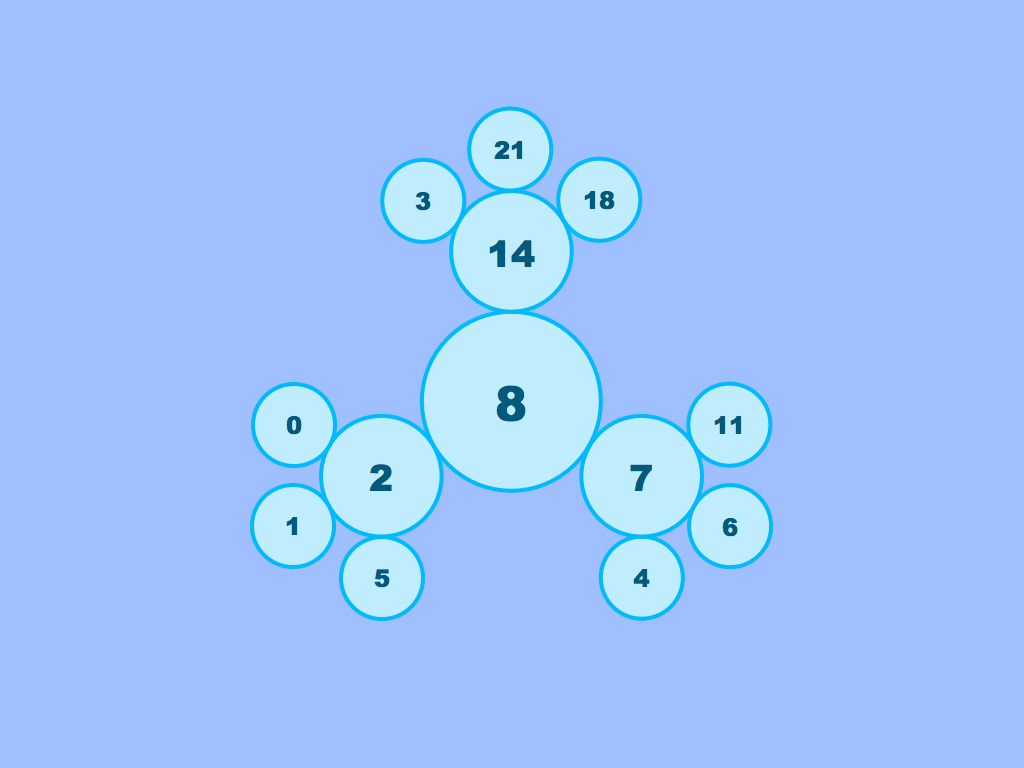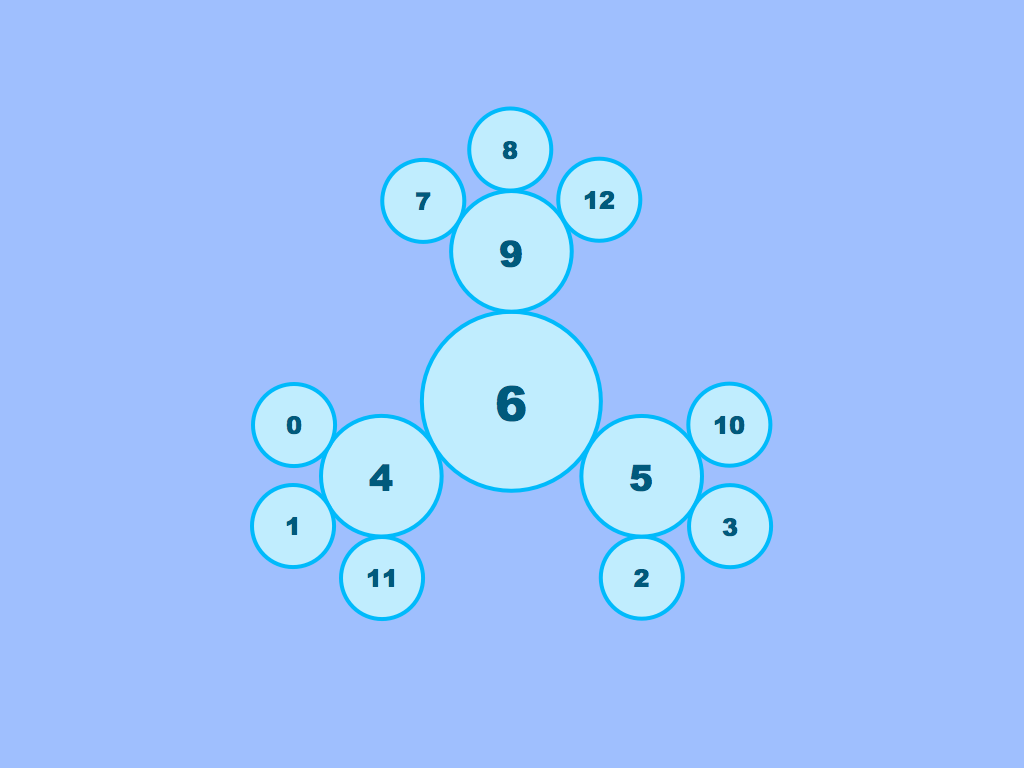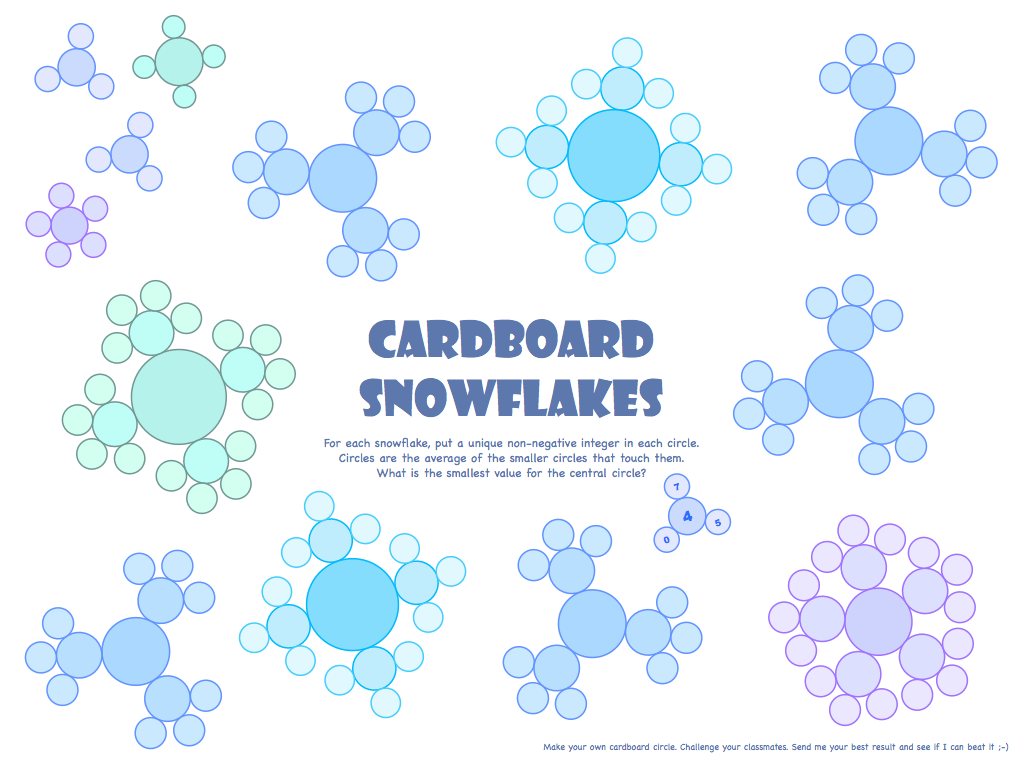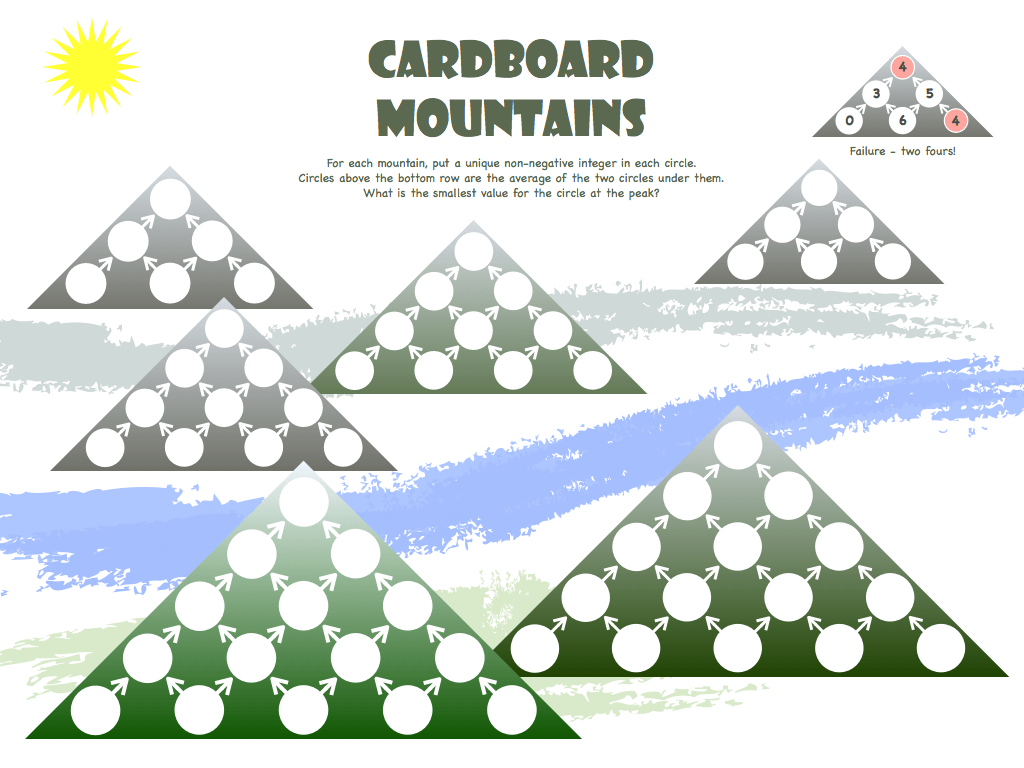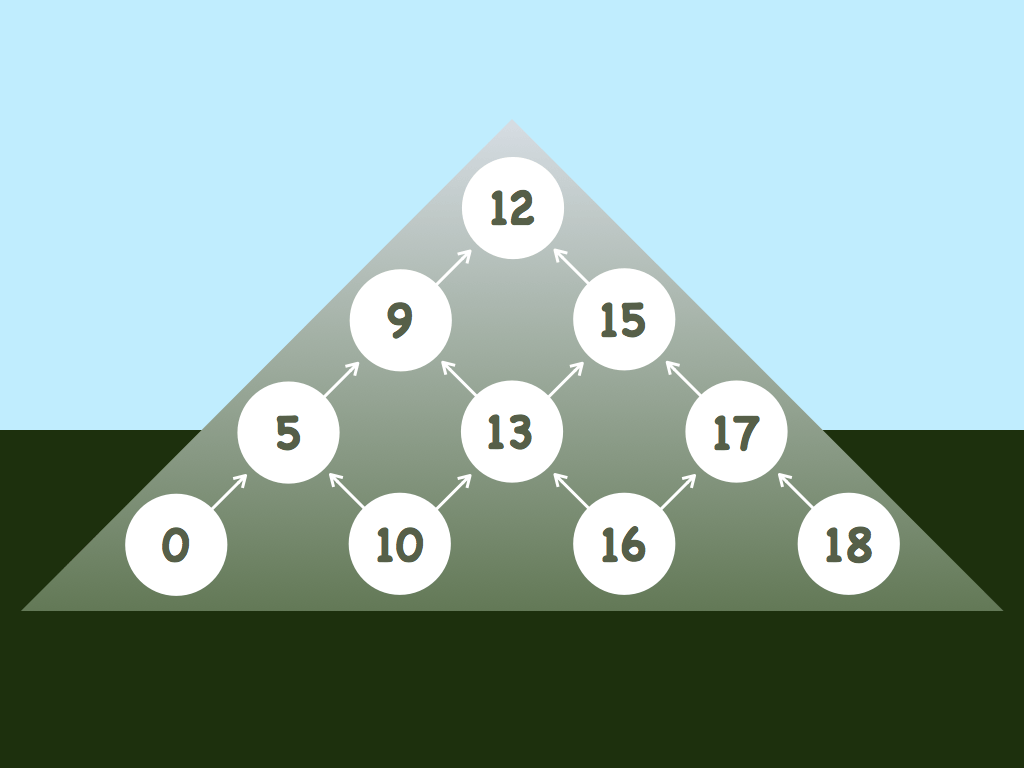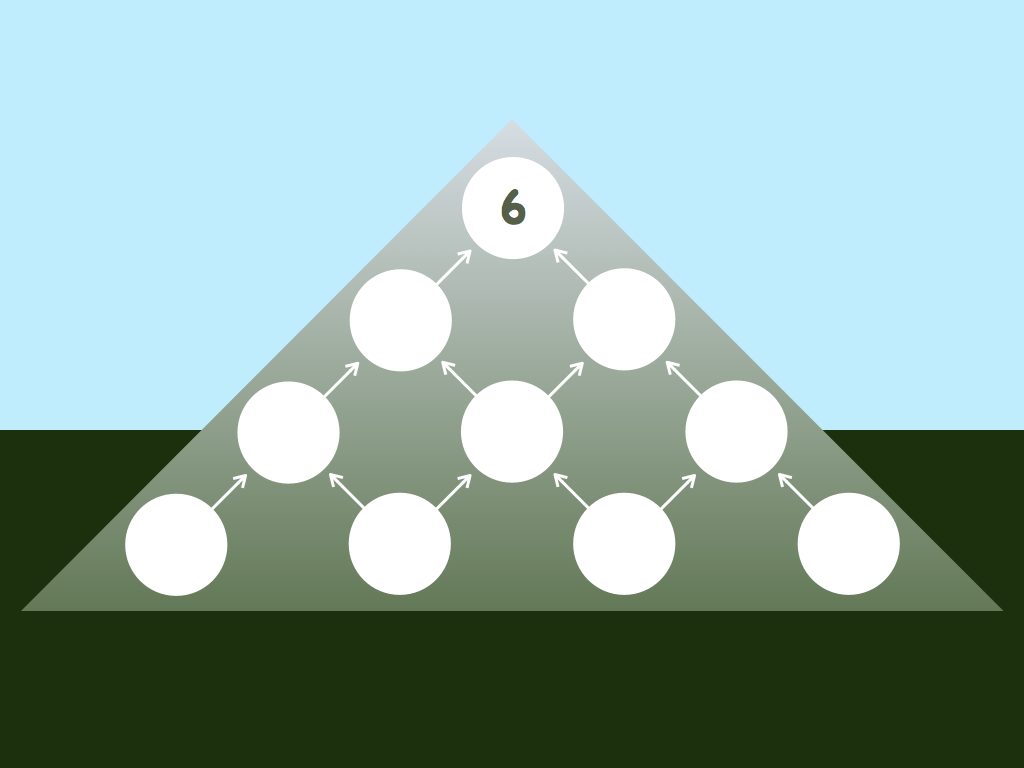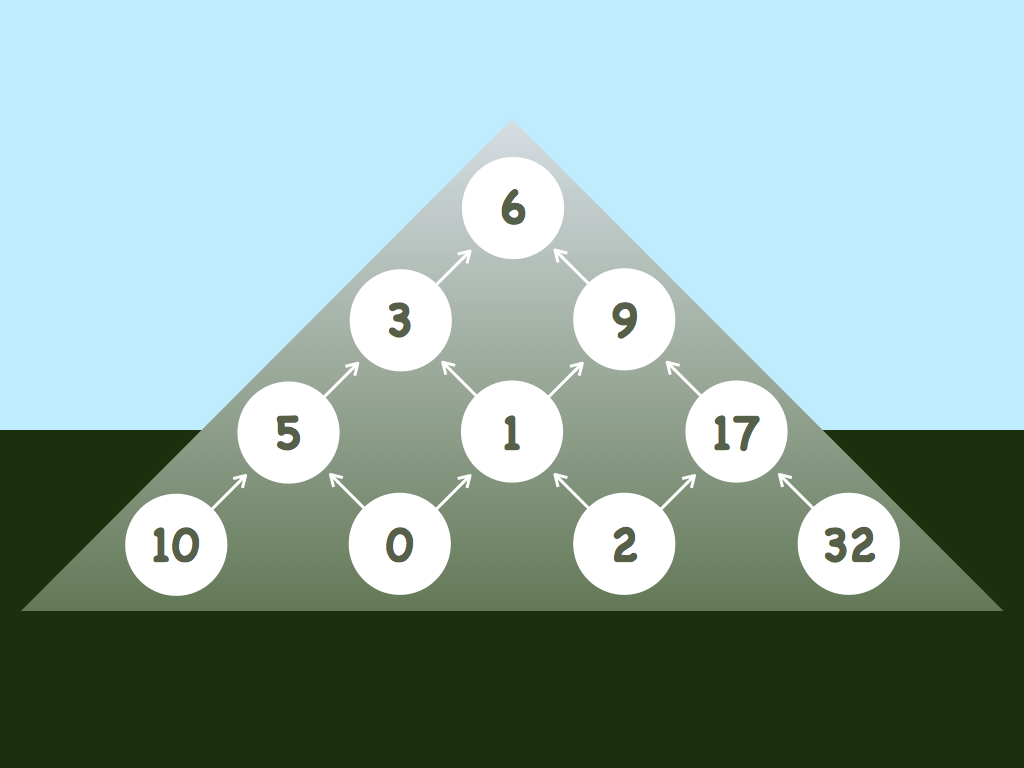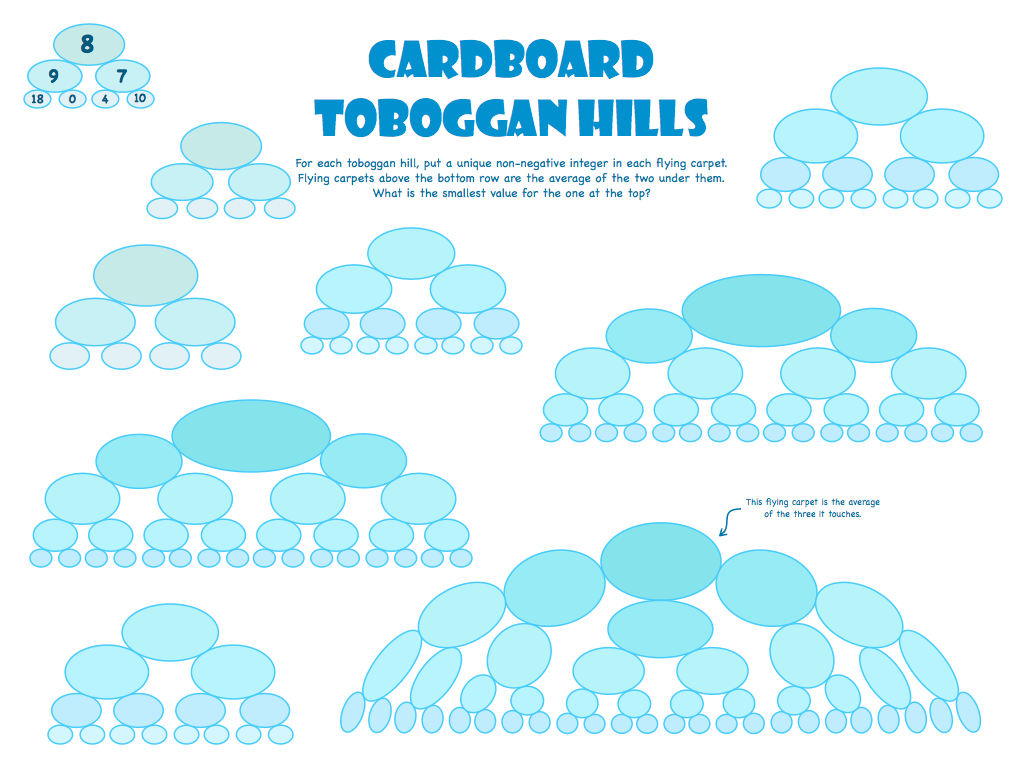Cardboard Snowflakes
(MathPickle, 2015)
Give your students practice finding the average of some integers. As with nearly all MathPickle puzzles – most students should work in pairs with a single sheet in front of them. Keep the other two puzzle sheets hidden. These will re-engage students 15 minutes into the lesson. Keep the mystery alive 😉
There are three puzzle sheets included:
Cardboard Snowflakes is for students finding the mean of more than two integers. It is curricular for grade 6 under the Common Core State Standards.
Cardboard Mountains is for students finding the mean of exactly two integers. This is appropriate for students in grade 4 – long before they can find the average of more than two integers. Four years after I published this puzzle I got an email from Henry Klaassen – a teacher at Mount Cheam Christian School in Chilliwack, BC, Canada. One of his students – Nina Kerkhoff – had just beaten what I thought was a pretty good number on top of the Cardboard Mountain of height four. The best I had found was six. She found a mountain with 5 at the summit. Wow! Instead of revealing her whole mountain I will just say that it does contain a six, but I’ll leave it to you to figure out where 😉 Congratulations Nina!
The last puzzle sheet – Cardboard Toboggan Hills is for students to explore number patterns that arise out of these challenges.
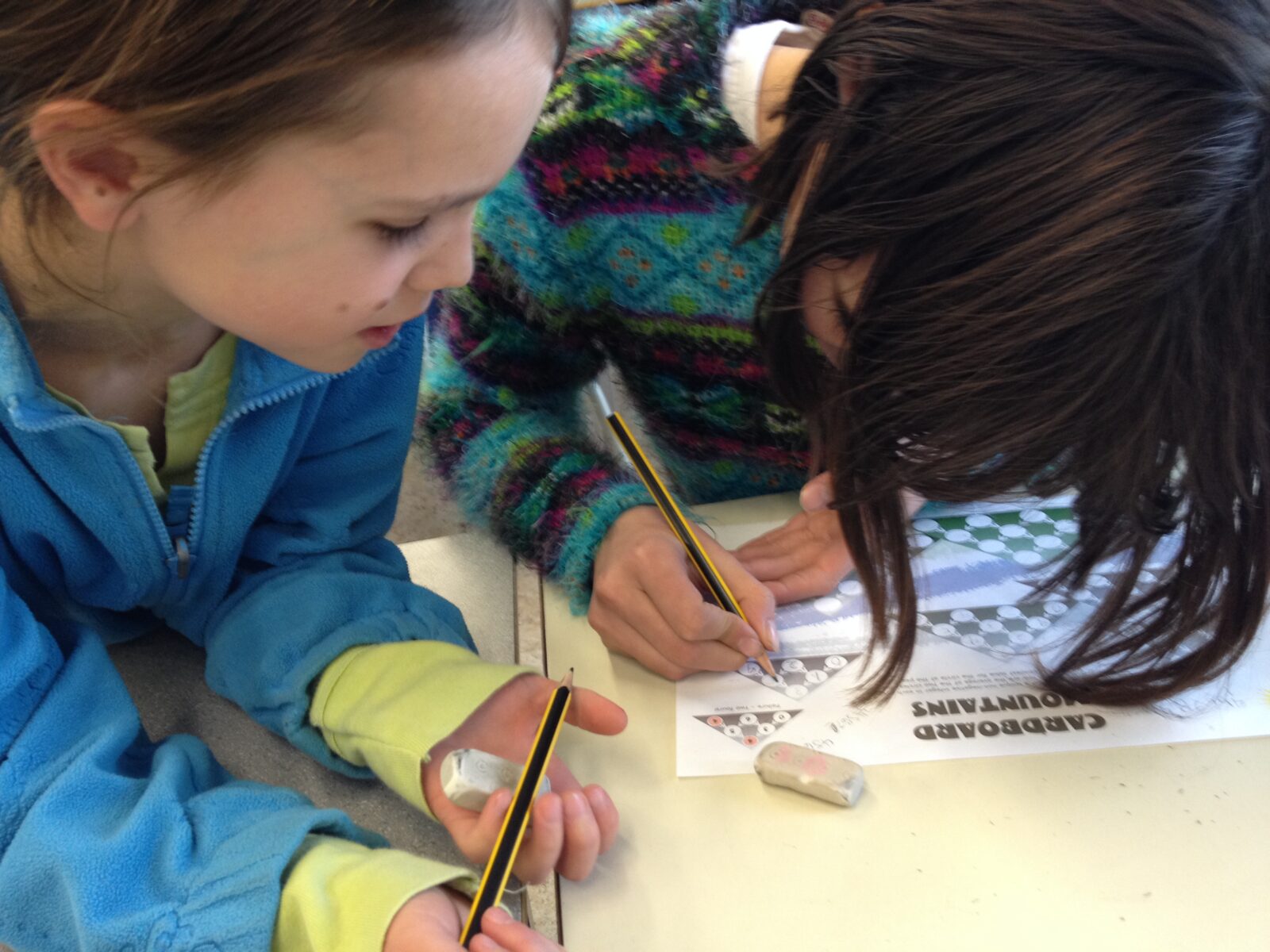
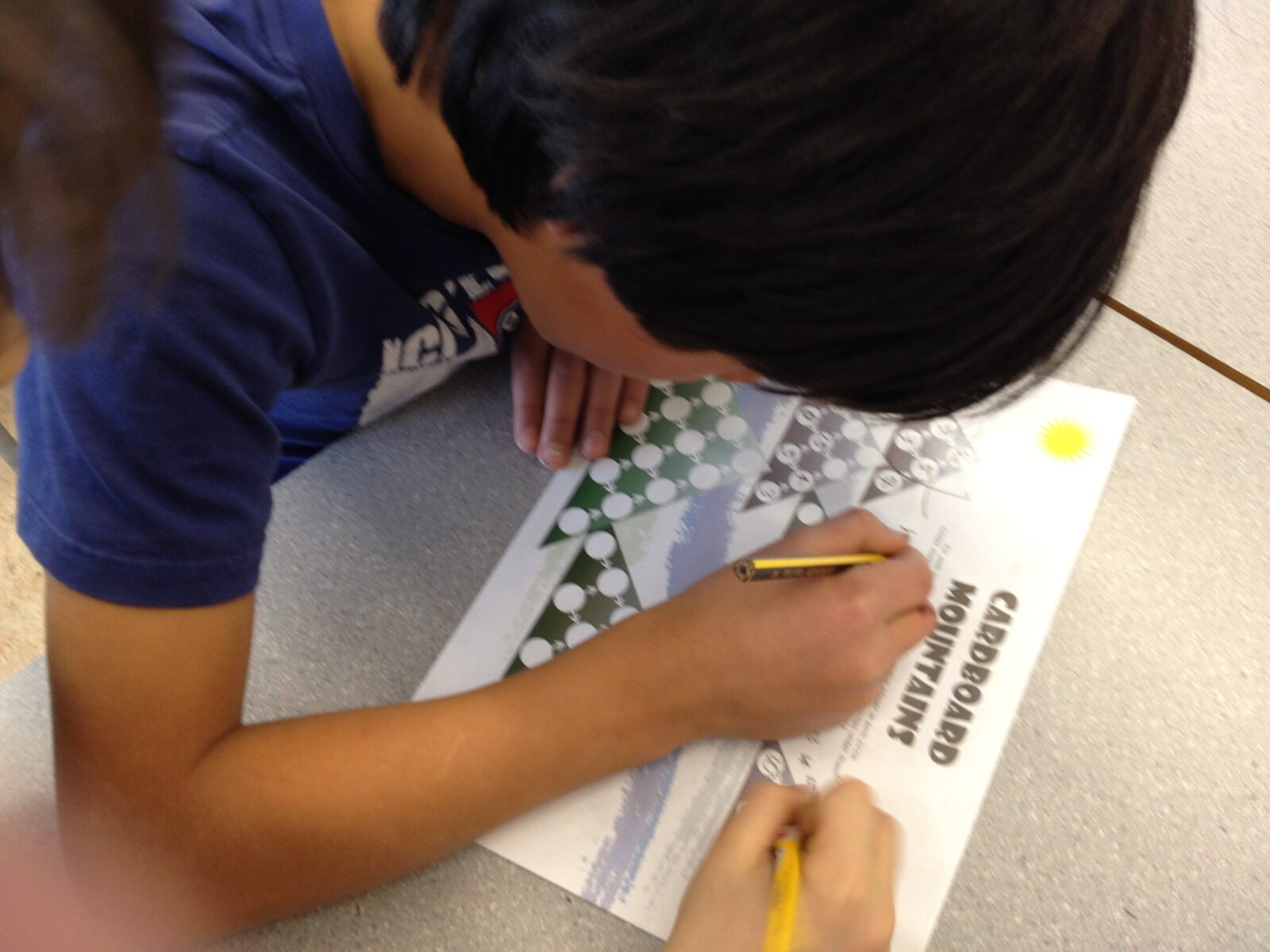
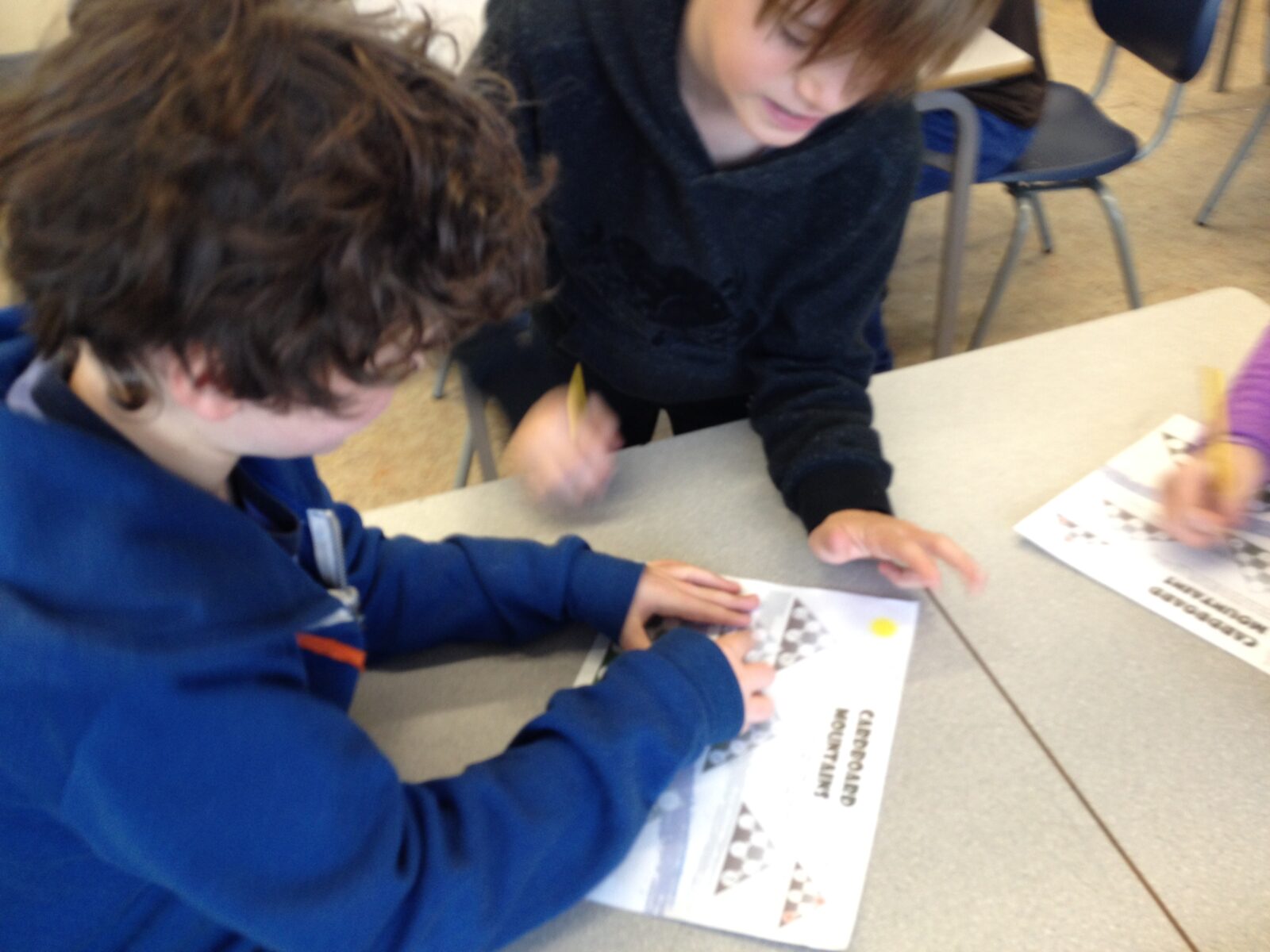
Standards for Mathematical Practice
MathPickle puzzle and game designs engage a wide spectrum of student abilities while targeting the following Standards for Mathematical Practice:
MP1 Toughen up!
Students develop grit and resiliency in the face of nasty, thorny problems. It is the most sought after skill for our students.
MP2 Think abstractly!
Students take problems and reformat them mathematically. This is helpful because mathematics lets them use powerful operations like addition.
MP3 Work together!
Students discuss their strategies to collaboratively solve a problem and identify missteps in a failed solution. MathPickle recommends pairing up students for all its puzzles.
MP4 Model reality!
Students create a model that mimics the real world. Discoveries made by manipulating the model often hint at something in the real world.
MP5 Use the right tools!
Students should use the right tools: 0-99 wall charts, graph paper, mathigon.org. etc.
MP6 Be precise!
Students learn to communicate using precise terminology. MathPickle encourages students not only to use the precise terms of others, but to invent and rigorously define their own terms.
MP7 Be observant!
Students learn to identify patterns. This is one of the things that the human brain does very well. We sometimes even identify patterns that don't really exist 😉
MP8 Be lazy!?!
Students learn to seek for shortcuts. Why would you want to add the numbers one through a hundred if you can find an easier way to do it?
Please use MathPickle in your classrooms. If you have improvements to make, please contact me. I'll give you credit and kudos 😉 For a free poster of MathPickle's ideas on elementary math education go here.
